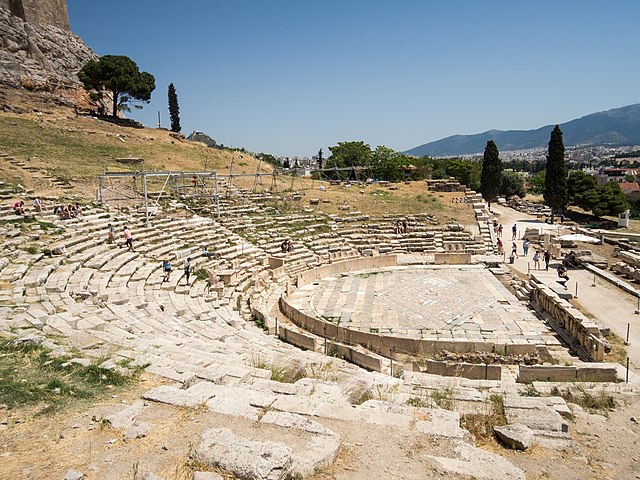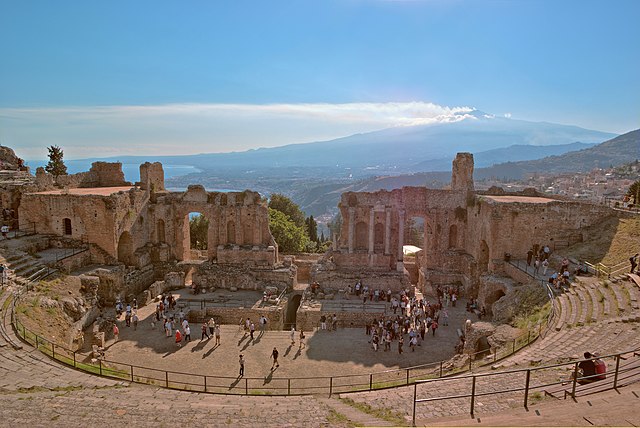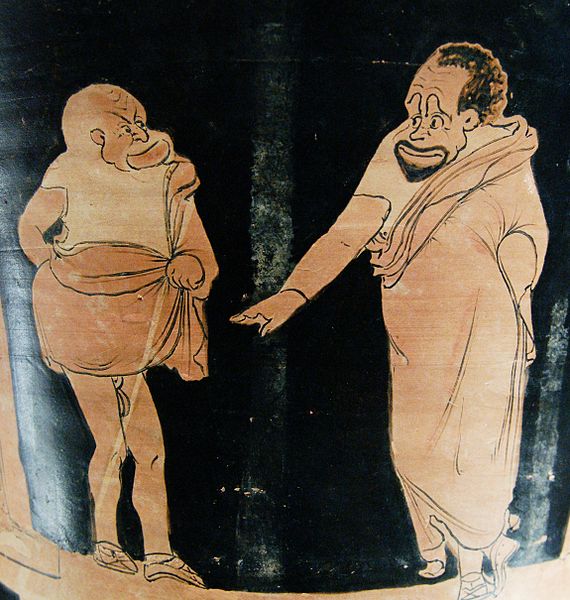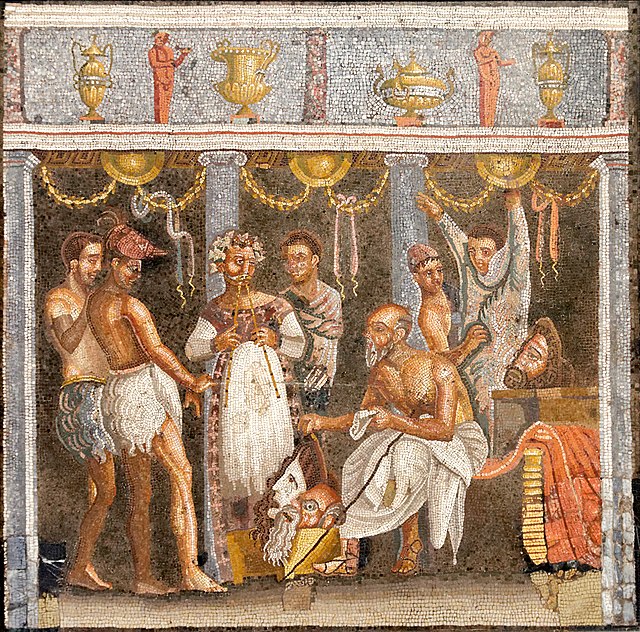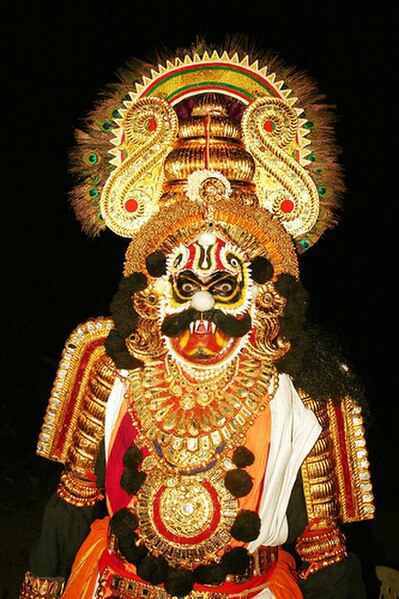Theatre of ancient Greece
A theatrical culture flourished in ancient Greece from 700 BC. At its centre was the city-state of Athens, which became a significant cultural, political, and religious place during this period, and the theatre was institutionalised there as part of a festival called the Dionysia, which honoured the god Dionysus. Tragedy, comedy, and the satyr play were the three dramatic genres emerged there. Athens exported the festival to its numerous colonies. Modern Western theatre comes, in large measure, from the theatre of ancient Greece, from which it borrows technical terminology, classification into genres, and many of its themes, stock characters, and plot elements.
Bronze statue of a Greek actor, 150–100 BC. The half-mask over the eyes and nose identifies the figure as an actor. He wears a man's conical cap but female garments, following the Greek custom of men playing the roles of women. Later, slave women were brought in to play minor female characters and in comedy as well.
View of the ancient theatre at Epidaurus, considered by Pausanias the finest in Greece.
The Theatre of Dionysus
Roman, Republican or Early Imperial Relief of a seated poet (Menander) with masks of New Comedy, 1st century BC. – early 1st century AD, Princeton University Art Museum
Theatre or theater is a collaborative form of performing art that uses live performers, usually actors or actresses, to present the experience of a real or imagined event before a live audience in a specific place, often a stage. The performers may communicate this experience to the audience through combinations of gesture, speech, song, music, and dance. It is the oldest form of drama, though live theatre has now been joined by modern recorded forms. Elements of art, such as painted scenery and stagecraft such as lighting are used to enhance the physicality, presence and immediacy of the experience. Places, normally buildings, where performances regularly take place are also called "theatres", as derived from the Ancient Greek θέατρον, itself from θεάομαι.
Greek theatre of Taormina, Sicily, Italy
A depiction of actors playing the roles of a master (right) and his slave (left) in a Greek phlyax play, c. 350/340 BCE
Roman mosaic depicting actors and an aulos player (House of the Tragic Poet, Pompeii).
Rakshasa or the demon as depicted in Yakshagana, a form of musical dance-drama from India



